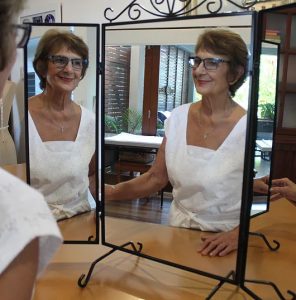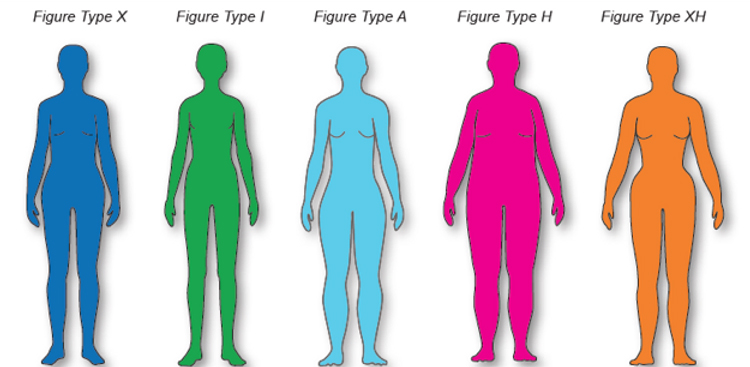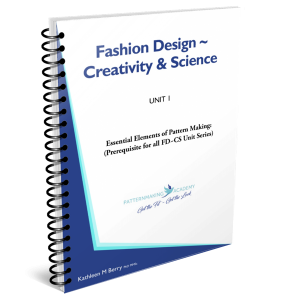About Kath
Hello and Welcome
My name is Kathleen Margaret Berry [often referred to as Kath, and less frequently as Doctor]

I am an Author, Researcher, Consultant, Pattern Engineer, Anthropometrist, Scientist, and a Garment Fitting Enthusiast.
I commenced my journey into the field of fashion over five decades ago: it started with the fit of female garments.
Confession
To start with, I must confess that my interest in garment fit soon turned into a passion. I can go even further and call it an obsession. Yes, perhaps it was and still is, but one that has taken me on a very challenging, intriguing and amazing journey.
I would like to go back in time to when I was a month away from my 14th Birthday. I had just finished my Merit certificate in a large country town in Victoria. I was excited that the following year I was going to go to college to complete my secondary education.
This, however, was not to be. I was faced with one of the biggest challenges of my life – my father passed away. I think he may have spoilt me a bit being the youngest child, but I chose to put my education on hold due to family circumstances and started work as a telephonist. Interestingly, I felt Dad’s presence with me many times, encouraging me in my endeavours, particularly when I became overwhelmed with studying, and research into trying to find the answers to my passion and obsession with garment fit. I am not by nature a quitter, but there were times when I wanted to give up. I am glad, however, that I continued my journey and found some answers to my quest of finding a way of achieving better fitting female garments. [Thanks Dad]
Although the journey was a little bumpy at times, I am pleased I persisted in my endeavours, and found answers and solutions to many of the issues I was confronted with.
One ground-breaking solution for me was identifying what I describe as the ‘hidden elements’ of garment fit – so called as they are not emphasized in the many, many, text books that I have studied for countless years.
I believe these elements are crucial to obtaining well-fitting garments, and are outlined in eBook Unit 1: Essential Elements of Pattern Making.
Now back to reality. I resumed my education as a mature age student, and took all of the certificate courses available in the fields of pattern making, garment construction, and garment fitting. I even attempted millinery [the first attempt was a disaster] and fashion drawing and design [not brilliant, but good enough to get some feedback from my retail customers before I embarked on sampling].
I was employed by a fashion designer for one year.
I then started making female garments under my own brand, which I continued for eight years. I had a small team – all with excellent skills.
During that time, a comment was made to me by two buyers from different large retail outlets in Adelaide, South Australia, that is worth mentioning. The comment was made prior to an upgrade of the Australian Standard due to the change from Imperial to Metrication. Interestingly, the comment made by both buyers was:
‘Kath do not change your measurements – the fit is good’.
The buyers were happy with the fit of the garments I produced. I did not know then what the underlying message was, until I realized that there was a real issue in relation to ill-fitting female garments, that had been around for many years.
The same issue is still widespread at the present time.
For example, poor sell-throughs due to the ill-fit of female garments, many of which are ending up in landfill.
I started my teaching career as a part-time teacher in fashion, teaching pattern making and garment construction. Guess what? This included fitting a variety of female body shapes, and highlighted the need for an easy-to-follow drafting system for students to achieve a reasonable fit outcome quickly and efficiently.
After five years of part-time teaching, I accepted a full time Senior position with TAFE which I held for 20 years.
Technical teachers in those days had to commit to undertaking a Diploma in Teaching [Dip T]. On completing the Dip T, I completed a Bachelor of Education [B Ed].
The research topic for my B Ed was titled A Study of Measurements used in the Size Coding Scheme for Women’s Clothing.
My role as Senior of the fashion faculty was varied. It included interaction with the clothing industry, conducting a needs analysis, setting up the department, writing the curriculum, staff development, technical updating, and teaching. I had a fantastic team who were all skilled in their respective disciplines, and were prepared to work as a team, experiment with new methods and techniques, and update their technical skills as needed.
Return to Academia
To fuel my obsession, I wanted to know how to get the best garment fit for a variety of female body shapes.
I kept looking and searching for answers – why was it so difficult to achieve well-fitting garments?
I believed that one of the reasons for ill-fitting garments could be attributed to the fact that no two bodies are the same; each has its own unique characteristics; and there is a wide range of human body shapes, which can be seen by observing any group of people.
I felt I needed more in-depth information about human variation. With this aim I started a Master’s Degree at The University of Adelaide. My thesis was titled The Changing Size and Shape of Australian Women. Even though I knew there had been significant changes in the size and shape of Australian women over the past 50 years, I needed scientific research to back up my theory.
My research showed that not only had the size and shape of the female body changed quite significantly over time, but the data also identified five predominate female figure types, which accounted for over 98% of the sample population.
The five figure types are illustrated in the diagram.

I realize there are many more figure types, and that each female body has unique characteristics. However, after my research identified these five main figure types I was prompted to go further again.
This time it was a PhD, still at The University of Adelaide. My thesis topic was A Comparative Study of Pattern Engineering for the Current Size and Shape of Australian Women. The research and studies further fuelled my obsession with pattern making and garment fitting, and paved the way for me to develop a scientifically based, sustainable pattern engineering system for a variety of female body shapes.
Many practitioners in the apparel industry are concerned about changing their traditional approach of sizing, to move from a garment size to a body shape concept. However, from my perspective, this move is essential.
My ultimate aim is to inspire, educate, and pass on knowledge that I have acquired over the past five decades, to others interested in adopting the body shape concept, and who require a tried and proven system to put their interest into practice.
From my experience, if you have a passion or obsession about something you want to do, and lack confidence in yourself, I encourage you to Go Ahead and Do it. I did! and although I faced many challenges, it has been well worth it. I am proud to say I have achieved many goals, including the innovative and wide range of PMA publications. These have now become my legacy.
For more information on all the PMA publications click on SHOP
I would like to finish with a brief account about an experience, I had relating to digital transformation, in the areas of: 2D – 3D, body scanning, data extraction, and avatar generation.
Late in 2018, the options of 2D – 3D appeared to be a good start for moving forward digitally: all that was necessary to go from design to the finished garment seamlessly was to get the appropriate software. After considerable research, it was clear that access to a 3D body scanner capable of accurate data extraction, and avatars to test the fit of garments were an essential step in the process.
However, where to get a body scan, was the question. Efforts over the next few years centred around finding an answer. I tried several avenues: Educational Institutions drew a blank; a shopping centre mall with a self-operating M-Pod looked promising but on arrival the M-Pod was closed for repair after an unlucky customer had locked themselves in!!! The outcome, after the M-Pod reopened was that the data was too limited and not accurate enough.
The next attempt was the local health and fitness store which was promoting a “fantastic new scanner”. However, the feedback was that the scanner was mainly for health and fitness, and the data would not be accurate enough to use for apparel production.
Finally in early 2021, after the 12 months interruptions caused by Covid-19 the opportunity to trial a 3D mobile phone scanning app with a selected group of customers seemed heaven-sent: a fantastic concept – particularly for small businesses. It appeared to offer the ideal solution for easy, convenient scanning; having ready-to-use body measurements extracted from the scans remotely; opening up possibilities for 2D to 3D, and using avatars for evaluating the fit and design of prototype garments before production.
However, when the trial was completed and the data was extracted, and compared with my customers’ manual data, there was too much variation in the extracted data for it to be applied successfully in the pattern engineering process I use. I believe that trusting the accuracy of body measurements used in a pattern engineering system is crucial, particularly for the stakeholders who are yet to move into the world of 2D to 3D virtual simulation and virtual fit.
A key factor here is that small businesses don’t have the resources to make major changes quickly or easily. If doubts exist about potential change, the simplest and safest option is to maintain the status quo. Once there is full certainty about measurement accuracy using mobile devices, the situation will inevitably change. Smaller stakeholders will be able to confidently move forward into the world of 2D to 3D and take advantage of all it has to offer.
Read more analysis and opinions about 3D body scanning with mobile phones in Unit 12.
In spite of current doubts about making changes, digital transformation is predicted to eventually become the norm at every level of apparel production and distribution. It will take time, but according to industry commentary, the impact of Covid-19 has speeded up the process. When face to face communication and manual processing had to be put on hold, digital and virtual technology stepped up, and brands and product developers began transferring much of their output online into 3D and virtual format.
This will almost certainly be the way of the future. When I look back at ‘’the early days” I am amazed at the many changes that have taken place in the apparel industry over the last five decades. I have no regrets about where the changes led me.
The following academic qualifications, applied expertise, and my career highlights, sum up the pathway I have travelled in my fashion journey.
Academic qualifications
PhD University of Adelaide [2011] A Comparative Study of Pattern Engineering for the Current Size and Shape of Australian Women
MMSc – Anatomical, University of Adelaide [2001] The Changing Size and Shape of Australian Women
B Ed and Dip T Tech, Torrens College of Advanced Education
Applied Expertise
Owner / Principal of Pattern Making Academy
Researcher, trainer, lecturer
Author self-publisher
Scientist: Human form
Anthropometrist
Career
Fashion Faculty – Senior lecturer TAFE 20 years
International Consultant to the University of the South Pacific
Consultant and Advisor to Fiji Garment Training School
Team Leader for ripcurlgirl Anthropometric Sizing Survey of 2,025 Young Australian Females
Member of Steering Committee/ Course Advisory Group Holmesglen Institute Victoria for
Bachelor of Fashion Design
Brand Product Development Consultant
Consultant to Manufacturing Skills Australia re: MST60115: Advanced Diploma of Applied Fashion Design and Technology
My vision is a commitment to promoting the sustainability of pattern engineering by combining the science of pattern making with the creative art of fashion design, while continuing to research and support new initiatives in the field of product development.
My mission is to develop a range of publications that share time-honoured knowledge and innovative skills for addressing many of the challenges encountered in the design and production of female garments. Current challenges include sustainability concerns centred around garment fit, resulting in poor sell-throughs, waste of resources, and the excessive amount of landfill.
Having travelled the journey outlined above, I trust that my years of study and research findings, will be of value to pattern making students and designers-in training, and anyone starting out on their journey into the fashion world of design and garment creation.
How my research and findings will be utilized in to the evolving world of digital technology remains to be seen.
The PMA publications are for all individuals [or brands] who would like to achieve better fitting garments confidently and competently, and who are looking for an innovative foundation and the tools with which to do it. This is my contribution to the apparel industry, which has been, and still is, a big part of my life.
If you would like to discuss, or clarify any of the topics in the Printed Books or eBooks please feel free to contact me.


